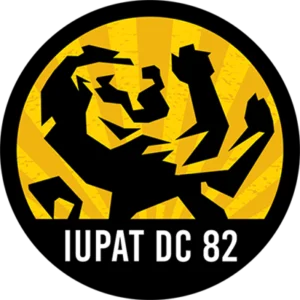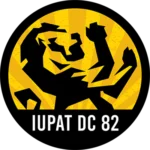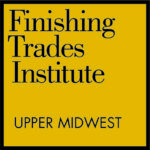How to Find Your Vaccine: By State
Every Minnesotan aged 16 years and older can currently get vaccinated.
You can use this map to find a vaccination site near you.
The Minnesota State Fairgrounds is currently being used as a free community vaccination site. Register here.
Address: Minnesota State Fairgrounds
1680 Como Avenue
Falcon Heights, MN
The Minnesota COVID-19 Vaccine Connector is a tool that helps Minnesotans find out when, where, and how to get a COVID-19 vaccine. Through the Connector, you can be among the first to hear about new vaccine opportunities in your area and you can directly sign up for an appointment at one of the Minnesota Community Vaccination Program sites.
Please visit https://www.health.state.mn.us/diseases/coronavirus/vaccine/index.html for more information.
Every Montanan aged 16 years and older can currently get vaccinated.
You can use the Vaccine Finder to find a vaccination site near you.
Please visit https://dphhs.mt.gov/covid19vaccine for more information.
Every North Dakotan aged 16 years and older can currently get vaccinated.
You can use the Vaccine Finder to find a vaccination site near you.
Please visit https://www.health.nd.gov/covid-19-vaccine-information for more information.
COVID-19 vaccinations are now available to all South Dakota residents.
You can use this map to find a vaccination site near you.
Please visit https://doh.sd.gov/Covid/Vaccine/Public.aspx for more information.
Every Wisconsin resident aged 16 years and older can currently get vaccinated. Register here.
You can use this map to find a vaccination site near you.
Please visit https://www.dhs.wisconsin.gov/covid-19/vaccine.htm for more information.
Dear Members,
Doctors and nurses across the country have reported that this virus is dangerous beyond the standard flu or cold.
Misinformation can quickly lead to behavior that puts people at risk.
That’s why IUPAT 82 is here to be your source of reliable, real-time, and factual information.
1. In addition to the resources provided below, we will provide real-time updates as they become available
2. We’re relying on you to help spread the word (not the germs- social distance 6 feet please) on how to stay safe, access critical financial resources, and get through this tough time together.
We know you’ll all continue to be leaders in your communities during this pandemic crisis.
Quick Tips
- Even if you do not feel sick, you can spread COVID-19
- Safe practices don’t just save you, they save others whose immune systems cannot fight off this virus
- Social distance measures- 6 feet at all times!
- On a MUST work on a jobsite? you MUST adhere to the CDC-recommended protocols of washing your hands frequently and again, staying at least 6 feet away from your coworkers
- If your jobsite has access to masks rated N95 or above, please use one.
Resources
Montana workers: Please read Governor Bullock’s COVID-19 Updates: https://covid19.mt.gov
Minnesota workers: Please read Governor Walz’s COVID-19 Updates, including the most recent Stay at Home order:
https://mn.gov/governor/covid-19/covid-news.jsp?id=424820
We’ve created this set of resources from our fellow unions who we are proud to stand in solidarity with, who’s members are on the front lines of the healthcare field fighting the virus.
Important information from the AFL-CIO:
- Coronavirus Informational Flyer
- Priorities of the Labor Movement to Address the Coronavirus Pandemic
- Working People’s Demands in the COVID-19 Pandemic Face
See below for member information from the CARES Act FAQ.
Update:
The Finishing Trades Institute of the Upper Midwest will be closed for all classes until April 27. We will update our students as we create updated class schedules for all programs, including PSEO.
In solidarity,
Terry Nelson
BM/ST, IUPAT DC 82
—-
Member Information from the CARES Act FAQ:
About Health Insurance:
If I have private insurance, will I have to pay for a coronavirus test?
The Families First Coronavirus Act required that all private insurance plans cover coronavirus testing without deductibles, coinsurance, or co-pays. That bill also prohibited plans from using tools like prior authorization to limit access to testing. The CARES Act makes a technical correction to ensure that the policy covers all tests that meet the appropriate standards. Insurers also have to cover fees for visits to the ER, an urgent care center, or a doctor’s office associated with getting a test without cost sharing.
If I have private insurance, how does this bill affect the cost of a vaccine when one becomes
available?
The Affordable Care Act required that preventive services and vaccines be covered by private insurance without cost-sharing. Normally, these services and vaccines are covered starting on the first day of the plan year beginning after they get a favorable rating or recommendation from the United States Preventive Services Task Force or the Advisory Committee on Immunization Practices. This section requires that coverage without cost sharing begin fifteen days after getting a favorable rating or recommendation.
How does this bill increase access to telehealth services for seniors and other Medicare beneficiaries?
The CARES Act gives the Secretary of Health and Human Services (HHS) broad authority to allow more health care providers to provide telehealth services to Medicare beneficiaries, including in the beneficiaries’ homes to avoid potential exposure to COVID-19, and provide more flexibility in terms of how those telehealth services can be provided. Once enacted into law, the HHS Secretary must put out guidance explaining how this expanded waiver authority will be used to increase access to telehealth services for seniors and other Medicare beneficiaries.
How much will patients have to pay for the COVID-19 vaccine once it becomes available?
The CARES Act ensures that the vaccine itself and its administration is free to beneficiaries with Medicare Part B and those with Medicare Advantage who receive the vaccine from an innetwork provider.
Additionally, the Families First Coronavirus Act required that all private insurance plans cover coronavirus testing without deductibles, coinsurance, or co-pays. That bill also prohibited plans from using tools like prior authorization to limit access to testing. The CARES Act makes a technical correction to ensure that the policy covers all tests that meet the appropriate standards.
Insurers also have to cover fees for visits to the ER, an urgent care center, or a doctor’s office associated with getting a test without cost sharing.
The Affordable Care Act required that preventive services and vaccines be covered by private insurance without cost-sharing. Normally, these services and vaccines are covered starting on the first day of the plan year beginning after they get a favorable rating or recommendation from the United States Preventive Services Task Force or the Advisory Committee on Immunization Practices. This section requires that coverage without cost sharing begin fifteen days after getting a favorable rating or recommendation.
How will seniors access the medications they need while also being told it’s better to stay at home?
In the past, Medicare drug plans only let beneficiaries receive a 30 day supply of their prescription.
Under the CARES Act, during the COVID-19 Public Health Emergency (PHE) a senior on Medicare can get up to 90 days of a prescription if that is what the doctor prescribed, as long as there are no safety concerns. Medicare drug plans will also allow beneficiaries to fill prescription early for refills up to 90 days, depending on the prescription.
If a patient has COVID-19 and has to enter the hospital, can their regular personal care attendant, who they depend on at home, still help while the patient is in the hospital?
Under the CARES Act, state Medicaid programs now have the ability, should they choose to pick up the option, to allow direct support professionals to continue to provide care and services for patients they are supporting in the hospital, including seniors and individuals with disabilities.
About Emergency Leave:
Who is a covered employee?
To be a “covered employee,” an individual must first be working for a “covered employer.” In general, an individual who is employed by a covered employer is covered by both the paid sick leave and paid family leave; the definition of “employee” is based in the Fair Labor Standards Act (FLSA) and is broad and intended to capture most people. However, paid family leave has an additional requirement that an individual has been employed by the employer for at least 30 days to qualify; if an individual was laid off by their employer after March 1, 2020, had worked for that employer for 30 of the 60 calendar days before being laid-off, and is re-hired by the employer, then that employee qualifies as a covered employee even though upon their rehire they have not been working for 30 days for the employer. Most federal employees are excluded from the paid family leave, and OMB has the authority to exclude any federal employees from both the paid sick leave and paid family leave.
How much paid sick leave are employees eligible to take?
For paid sick leave, employees are eligible to take up to 80 hours (two weeks) of paid time, depending on the employee’s regular schedule, at 100% of the employee’s regular rate of pay (up to $511 per day) due to quarantine/isolation order, health-care provider guidance to self quarantine, or seeking diagnosis for symptoms of COVID-19; the pay is limited to 2/3 of the employee’s regular rate of pay (up to $200 per day) for caring for someone who is isolated/quarantined and for taking care of a child due to a closure of school or child care.
How much-paid family leave are employees eligible to take?
For paid family leave, employees are eligible to take up to 10 additional weeks of paid time at 2/3 of the employee’s regular rate of pay (up to $200 per day) solely to take care of a minor child due to a closure of school or child care or the unavailability of a child care provider.
What are the qualifying reasons for leave?
For paid sick leave:
Unable to work or telework due to
- The employee is covered by a quarantine or isolation order by a federal, state, or local authority;
- The employee has been advised by a health care provider to self-quarantine due to concerns over COVID-19;
- The employee is experiencing symptoms of COVID-19 and is seeking diagnosis;
- The employee is caring for an individual who is covered by a quarantine or isolation order or who has been advised by a health care provider to self-quarantine;
- The employee is caring for a son or daughter if, due to COVID-19, the school or place of care is closed or if the child care provider is unavailable; or
- The employee is experiencing a “substantially similar condition” as specified by HHS and DOL.
For paid family leave:
The employee is unable to work or telework due to needing to care for a son or daughter under 18 years of age because, due to COVID-19, the child’s school or place of care is closed or the child’s child care provider is unavailable.
Are there documentation requirements an employee must provide to prove they are caring for an individual or child whose school or place of care is closed?
If the need for paid family leave is foreseeable, an employee must provide the employer with notice as soon as practicable; and an employer may require reasonable notice procedures to receive paid sick leave. However, while DOL may clarify this through guidelines or regulation, we do not read the Act to allow an employer to require any documentation to prove the employee
is caring for an individual or child.
When do these provisions go into effect?
According to DOL, they will go into effect on April 1 and will apply to leave taken between April 1 and December 31, 2020.
About Cash Payments to Americans:
Who qualifies to receive a check and how much will an individual receive?
Anyone who filed a tax return this year or last year. Individuals receive $1,200, married couples receive $2,400, and child dependents (under 17) receive $500.
What are qualified income levels based off of?
There is no qualified income threshold or requirement to receive the rebate. However, the rebate phases out at a 5 percent rate above adjusted gross incomes of $75,000 for single filers, $112,500 for heads of household, and $150,000 for joint filers.
Can those collecting Social Security or disability receive a check?
Yes, if they filed a tax return this year or last year, or received a form SSA-1099. Otherwise, they need to file a tax return.
Will SSA administer the funds to my EBT/Debit card that I receive my SSA benefits through?
Our understanding is that IRS is sending out the rebates (via direct deposit or checks)
How does an individual claim their check?
They do not need to claim their checks (unless they have not either filed a tax return this year or last year) – IRS will send out rebates automatically to their direct deposit or to the address provided on the last tax return submitted.
How long will it take for this check to be delivered?
Rebates sent via direct deposit will take a few weeks. Rebates sent via checks may take a few months.
Will I be taxed on this check?
No, rebates are not taxable.
Will I be eligible if I haven’t finished filing my 2018 taxes?
You need to have filed either a 2018 tax return or a 2019 tax return. If you have not filed either, you will not be eligible. You can file a 2019 tax return now to claim the rebate.
Will I be eligible if I have a lien against me, but I am in non-collect status?
Yes. Rebates will not be subject to garnishment, except if back child support is owed.
I withdrew my retirement in 2018- so my income that year was inflated. Is there any waiver for one time sources of income?
In this case, the taxpayer should file a 2019 tax return.
About Higher Education:
What forms of relief are students impacted by COVID-19 eligible for?
Students will be eligible for emergency financial aid grants from their institutions to meet unexpected and urgent needs related to the coronavirus, such as expenses related to food, housing, course materials, technology, health care, and child care. Students who are currently participating in the Federal Work Study program can continue to receive work-study payments from their institution if they are unable to work due to workplace closures.
Relief also exists for students who must drop out of school due to COVID-19. Students will have the portion of their student loan taken out for the semester (or equivalent) canceled. Further, students who received a Pell Grant or subsidized student loan will not have those types of financial aid counted toward their lifetime limits.
What relief is provided to federal student loan borrowers?
Borrowers do not need to make payments on student loans held by the federal government (Direct Loans and FFEL Loans held by the U.S. Department of Education) through September 30, 2020. Borrowers with commercially-held FFEL loans and Perkins Loans are not eligible, and private student loan borrowers are also not eligible. No interest will accrue on such loans for the same time period. This provides more than 37 million borrowers with relief from the financial pressure of making monthly payments for approximately six months.
During this period, borrowers will not be subject to involuntary collections (garnishment of wages, tax refunds, and Social Security benefits) and will not have any negative credit reporting or late payments during this time period. Student borrowers will continue to receive credit toward Public Service Loan Forgiveness, Income-Driven Repayment forgiveness, and loan rehabilitation even though they will not be making payments. If borrowers want to continue making payments during this time to pay down principal and previously accrued interest (since no interest is accruing as of March 13) they are free to do so.
When will payments resume for federal student loan borrowers?
Starting August, student loan borrowers will receive notices to help inform them that their regular loan payments and interest accrual will resume after September 30, 2020. These notices will help protect borrowers by providing them with a transition period to stay on track as regular loan payments resume and to offer them the option to enroll in other relief options (such as income-driven repayment, which can lower a borrower’s monthly payment).
About Housing:
Is there any relief for upcoming rent, mortgage, and utility payments?
Any homeowner with an FHA, VA, USDA, 184/184A mortgage, or a mortgage-backed by Fannie Mae or Freddie Mac, who is experiencing financial hardship is eligible for up to 6 months’ forbearance on their mortgage payments, with a possible extension for another 6 months. At the end of the forbearance, borrowers can work within each agency’s existing programs to help them get back on track with payments, but they will have to pay missed payments at some point during the loan, so if borrowers can pay they should continue to do so.
Renters who have trouble paying rent also have protections under the bill if they live in a property that has a federal subsidy or federally backed loan. Owners of these properties cannot file evictions or charge fees for nonpayment of rent for 120 days following enactment of the bill, and cannot issue a renter a notice to leave the property before 150 days after enactment. After this period renters will be responsible for making payments and getting back on track, so they should continue to make payments if they’re financially able to do so. Renters who receive housing subsidies such as public housing or Section 8 who have had their incomes fall should recertify their incomes with their public housing agency or property owner because it may lower the rent they owe.
Will homeowners be foreclosed on if they can’t make their loan payments?
The bill includes a 60-day foreclosure moratorium starting on March 18, 2020, for all federally backed mortgage loans. Borrowers with FHA, VA, USDA, or 184/184A loans, or loans backed by Fannie Mae and Freddie Mac, will not see foreclosure actions and cannot be removed from their homes due to foreclosure during that time.
Will multifamily property owners be foreclosed on if they can’t make loan payments?
The bill provides owners of multifamily properties with federally backed loans having a financial hardship up to 90 days of forbearance on their loan payments. Property owners would have to request the forbearance and document their hardship in order to qualify, in 30-day increments.
During a forbearance period, the property owner may not evict or initiate the eviction of a tenant for nonpayment of rent and may not charge the tenant any fees or penalties for nonpayment of rent. This protection applies to loans issued or backed by federal agencies (including FHA and USDA) or Fannie Mae and Freddie Mac.
Who does the rental eviction moratorium apply to?
This provision applies to all renters who live in properties that receive a federal subsidy, such as public housing, Section 8 rental assistance vouchers or subsidies, USDA rental housing assistance, or Low Income Housing Tax Credits. It also covers any renters in properties where the owner has a federally backed mortgage loan, which includes loans backed by the FHA, USDA, and Fannie Mae and Freddie Mac. This includes any size of property, from single family houses to multifamily apartment buildings.
About Banking:
I have a loan and I am worried that I won’t be able to make my monthly payments. What can I do?
Contact your lender directly. The CARES Act allows banks and credit unions more flexibility to work with borrowers affected by the COVID-19 pandemic.
Does bill provide any relief for consumers who can’t pay their bills?
This bill does not. This section of the bill only provides instruction on how lenders or creditors should report consumers who have received a forbearance or some other accommodation to help them make payments.
Individuals having problems paying their bills should contact their lenders directly. The CARES Act allows banks and credit unions more flexibility to work with borrowers affected by the COVID-19 pandemic.
We will continue to work to enact credit reporting relief for borrowers who are struggling to make their payments during this crisis.
Who can use the Fed lending facilities?
The Federal Reserve will design the facilities. According to government officials, we expect there to be potentially over a dozen different facilities. The legislation specifically indicates that there should be a facility for states, municipalities, and tribes, as well as a facility for medium-sized businesses that are not eligible for the SBA program. It will also be critical for the Fed to consider other needs, such as protecting homeowners and renters.




